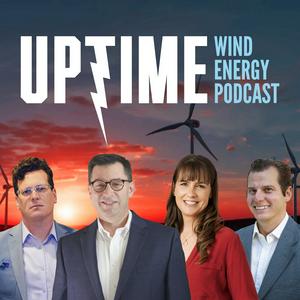Sunrez’s Tough Leading Edge Protection Solution
Brett Tollgaard from Sunrez discusses their new leading edge protection solution, created using a durable UV-cure resin system. Using this solution reduces downtime due to quick cure times and strengthens leading edges for years to come.
Sign up now for Uptime Tech News, our weekly email update on all things wind technology. This episode is sponsored by Weather Guard Lightning Tech. Learn more about Weather Guard's StrikeTape Wind Turbine LPS retrofit. Follow the show on Facebook, YouTube, Twitter, Linkedin and visit Weather Guard on the web. And subscribe to Rosemary Barnes' YouTube channel here. Have a question we can answer on the show? Email us!
Bret Tollgaard: Bret, welcome back to the program. Thanks for having me. Appreciate it.
Allen Hall: A lot has happened at Sunrez and you guys are the magic UV cure resin systems that everybody is using at the moment, but there's a bunch of new products that are coming out that I think a lot of operators and ISPs need to be aware of.
One of 'em. Is a fill of material that looks great when you're trying to fix the leading edges, which are just mangled from all the dirt and debris and rain. It's not something you can just kind of smooth over very easily. And a lot of times operators spend a bunch of times sanding, grinding, trying to get it where they can apply some sort of liquidy coating to it, and it never really looks great and it's not really smooth.
Bret Tollgaard: Sunrez has fixed that. We sure have. We've got a lot of customer feedback about some of the things that they'd like us to expand our UV cure portfolio on, and one of the big ones was leading edge protection. There's been a ton of different solutions and stuff used over the years. Some with success, some.
Slightly less mild [00:01:00] success. Uh, and so we thought it was an opportunity kind of right for the picking. And so, uh, the chemist spent a reasonable amount of time trying to develop a highly filled, uh, UV curable resin system that will live up to all the abrasion, whether it's rain, uh, you know, particulates in the air, et cetera.
And so we've undergone some really reasonable rain erosion testing thus far, and it's shown to be a pretty good result. And so it's been a slightly soft rollout as we really kind of finalize the formula in the system. But we really do think it's a product that the, uh, customers are gonna love, whether it's a pre impregnated, uh, fiberglass version, or potentially a, a putty version as well.
Joel Saxum: I mean, the LEP market is, you're always hearing about new LEP, right? There's this LEP test, there's a whole conference devoted to leading edge erosion that. The DTU puts on, but it's because it's such a prevalent issue, right? Like. Alan and I in the field looking at reviewing blade damages for lightning and things.
But we see all, all kinds of leading edge erosion. That is, it's crazy how annuity these turbines, some of these turbines are a [00:02:00] year, two, three years old, they're still in warranty and the leading edges look like they've been hit with a sandblaster. It's crazy. So the fact that you guys are working on something and what we really like, of course, about the UV cured products is that you get up there, you put it on, boom, you hit it with the uv.
You come off the tower, you turn it back on. 'cause a lot of operators, and this is, this is where sun really shines. A lot of operators are always talking about downtime. Downtime. When we talk about installing strike tape, how long do I need to leave the turbine off before? Well, we've working on some solutions.
We don't have to, uh, but. It's a, it's a very common thing and I really, what I really enjoy about what you said was customer feedback. So that means that you guys are in the market, you're trusted in the market, and people feel, feel good enough to come back to you and say, Hey, what about this? What about this?
What about that?
Bret Tollgaard: Yeah.

